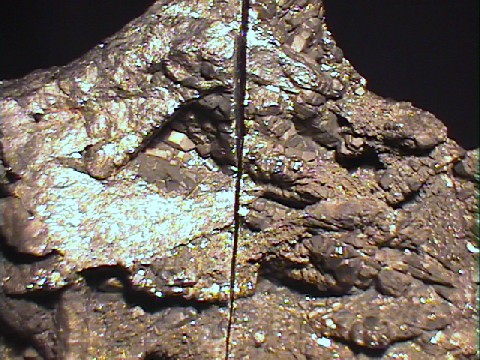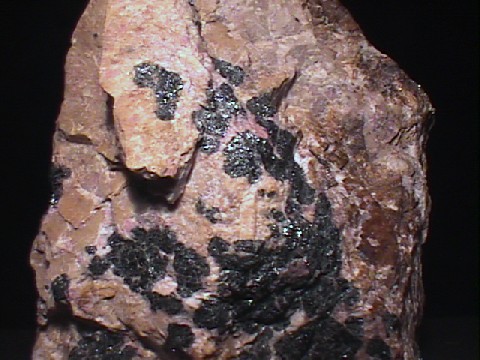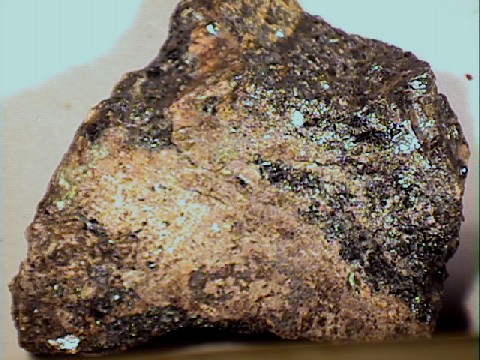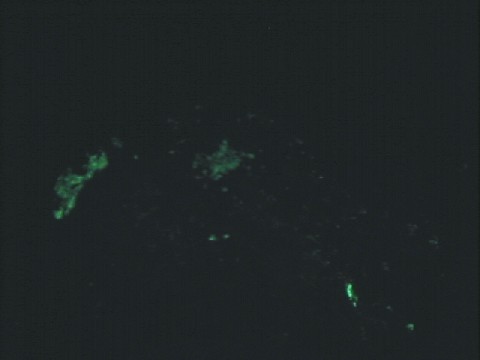 THE MINERAL CLINOHEDRITE
THE MINERAL CLINOHEDRITE
- Chemistry: CaZnSiO4 - H2O , Hydrated Calcium Zinc Silicate.
- Class: Silicates
- Subclass: Nesosilicates
- Group:
Euclase - Uses: A very minor ore of zinc and as mineral specimens.
Specimens
Clinohedrite is one of the 70 some fluorescing minerals from Franklin and Sterling Hill, New Jersey. It will fluoresce a nice orange-yellow color under short-wave ultra-violet light. This fluorescent color is in striking contrast to the normal color of clinohedrite. Under normal light, clinohedrite is white or colorless. It is one of several good fluorescing minerals from Franklin. The following table shows the more common fluorescing minerals with their respective fluorescing colors, from Franklin and Sterling Hill, New Jersey.
| Mineral: | Fluoresces: | Mineral: | Fluoresces: | Mineral: | Fluoresces: |
| Barite | white | Esperite | yellow | pale violet | |
| Calcite | red | Fluorite | Violet | Willemite | green |
| Clinohedrite | orange-yellow | Hardystonite | Violet-blue | Wollastonite | red |
These minerals are sometimes found in association with each other and can make for wonderfully colorful fluorescent specimens. The combination of clinohedrite, hardystonite and willemite is considered a classic. Fluorescence occurs when the ultraviolet light (invisible to humans) imparts energy to some of the atoms in the mineral. This energy is converted by the atoms into visible light that we can then see.
Clinohedrite belongs to an unusual symmetry class called the Domatic Class, of the monoclinic system. This class has only a few members and is characterized by the only symmetry element being a solitary mirror plane. Clinohedrite is a product of the metamorphism of zinc minerals, such as hemimorphite or smithsonite, that were caught up in the regional metamorphism that created the wonderful Franklin and Sterling Hill sites. Clinohedrite is now only found at Franklin and Sterling Hill, New Jersey. A discovery of clinohedrite at Christmas Mine, Gila County, Arizona produced pale violet delicate sprays, but only a few specimens have ever been recovered.
PHYSICAL CHARACTERISTICS:
- Color is white to colorless and violet.
- Luster is vitreous to dull.
- Transparency: Specimens are translucent to opaque.
- Crystal System is monoclinic; m.
- Crystal Habits include massive and lamellar specimens. Rare individual crystals are prismatic and at the Arizona locality aggregates formed sprays of acicular crystals.
- Cleavage is perfect in one direction (pinacoidal).
- Hardness is 5.5.
- Specific Gravity is approximately 3.2 - 3.4 (slightly above average)
- Streak is white.
- Other Characteristics: Fluoresces an orange-yellow color under short-wave UV light.
- Associated Minerals include willemite,
zincite,
franklinite,
apophyllite,
kinoite,
stringhamite , esperite, calcite and especially hardystonite. - Notable Occurrences include its type locality: Trotter Mine, Franklin as well as Sterling Hill, New Jersey and at the Christmas Mine, Gila County, Arizona, USA.
- Best Field Indicators are fluorescence, associations, locality and cleavage.






